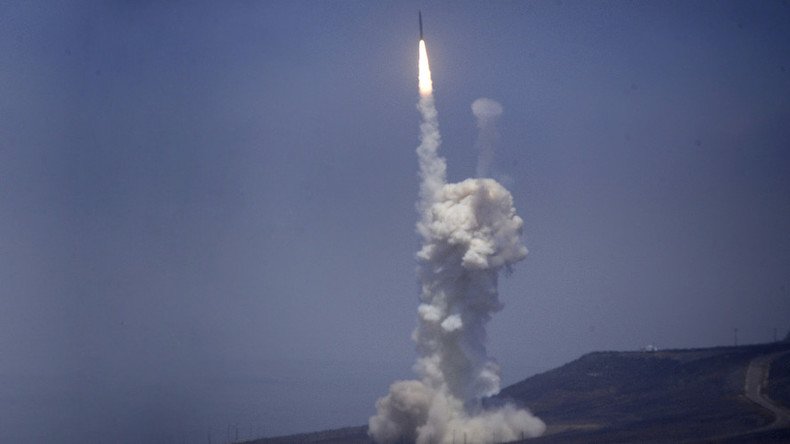Russia concerns won’t restrict NATO missile defense – US official

NATO will carry on setting up missile defense sites across Eastern Europe despite Russian calls to limit them, a senior US State Department official said, citing a “threat posed by North Korea.”
"We are not going to agree to limitations on our systems because we need to have the flexibility to deal with the dynamic and evolving threat," Frank Rose, deputy assistant secretary of state for arms control, told journalists at NATO HQ in Brussels on Tuesday.
"The key Russian concern ... is that in the future, absent legally binding constraints, we will develop systems that could potentially negate their strategic deterrent," Rose added.
New part of NATO air defense system goes online in Romania https://t.co/wlAZl7TXRbpic.twitter.com/Le2aQhz1X1
— RT (@RT_com) December 18, 2015Rose admitted Russian officials had repeatedly voiced concerns about the kinds of weapons brought in to Europe by the US, such as ground-based and sea-based missile defense interceptors. Continuing to build up the missile defenses in Europe off Russia’s borders, NATO insists North Korean ballistic missiles are likely able to reach the US.
"North Korea has large numbers of ballistic missiles and they test them often," Rose said. While there is considerable doubt that last week’s detonation by Pyongyang was a fully-fledged test of a hydrogen bomb, Washington already warned North Korea is seeking technology to build an intercontinental nuclear-armed ballistic missile.
Moscow has repeatedly argued that the secretive country possess insufficient technological know-how to develop strategic weapons capable of reaching the US.
NATO's ballistic missile defense, in place since 2010, has been a source of tension between Moscow and the US-led alliance.
Previously, Washington has announced plans to set up ballistic missile defense (BMD) sites in Central and Eastern Europe, most notably its ground-based Aegis Ashore system. It early December, an Aegis Ashore facility passed an interception test off the coast of Hawaii.
The Aegis Ashore Missile Defense Test Complex, owned by Lockheed Martin and located southwest of Kauai, Hawaii, at the US Navy’s Pacific Missile Range Facility, fired a Standard Missile-3 Block IB, at a target launched by a C-17.
A week later, an Aegis Ashore system went online at Romania’s Deveselu airbase, comprising SPY-1 radar and vertical-launch SM-3 long-range interceptor missiles.
Despite NATO’s ongoing missile defense build-up, Russia’s supreme military commanders note no existing US missile shield can withstand a potential Russian attack by intercontinental ballistic missiles.















